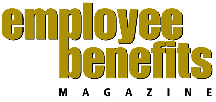Content area
Full text
Measuring the success of flex is key to ensuring a plan is providing value, so Sarah Coles looks at the methods employers can use to ensure their scheme is paying its way
The purse strings have never been tighter, and finance departments want to be sure every penny of expenditure is justified. So, to continue investing in a flexible benefits scheme, benefits professionals must be able to prove an ability to deliver tangible business objectives. The basis of any proof begins with measurement, but how can they measure the success of flex?
Many organisations begin by looking at take-up. Paul Ashcroft, a principal at consultancy firm Mercer, says employers will often select a certain level of take-up as a target at the outset. This is a reasonable, if crude, measure of interest, but this kind of approach is limited because it will only tell employers what staff did, not how or why.
High take-up
In some cases, this may also be irrelevant because the success of some benefits may not hinge on high take-up figures.
"Something like a cycle-to-work scheme, for example, may only be taken up by a small fraction of the population, but will still deliver on the objective of enabling people to cycle to work where practical," explains Ashcroft.
Measures of success, therefore, need to go further. The next stage is to examine data on how employees engage with the scheme. Paul Brown, a senior consultant with Watson Wyatt, says: "Some companies use the number of employees that have logged in and interrogated their options as a measure of success, targeting around 75%. Others consider that at least one change from the fixed package of benefits represents active participation. A realistic target for this is 40%...





